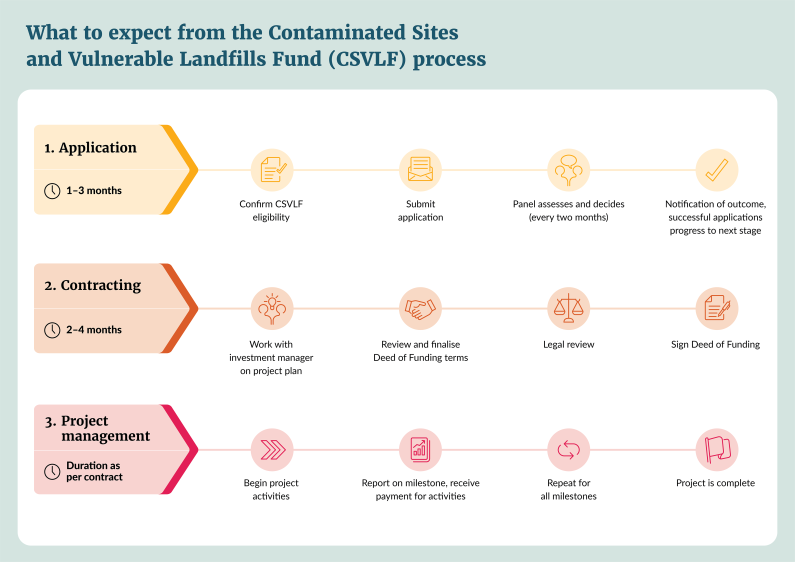Application stage
After checking eligibility, fill out your application form. The Guide for applicants includes examples and details on eligible costs. You can download a copy of the application form and the Guide for applicants here.
View the CSVLF application form.
Read the CSVLF guide for applicants.
Send the completed application form with any supporting documentation to CSVLF@mfe.govt.nz.
Assessment of applications
A panel of contaminated land management experts will assess applications. The assessment panel meets every two months.
The panel provides recommendations on whether the application should be approved for funding. The Ministry will consider recommendations and make final decisions for projects requesting less than $1 million. Projects requesting more than $1 million are decided by the Minister for the Environment.
Contracting stage
At the contracting stage, you will be asked to submit a project plan and detailed budget. Your investment manager will provide guidelines to assist you with this. Your contract will be subject to firming up costs, meeting any conditions, and agreeing to terms in the deed of funding. Once these steps are complete, you will proceed to signing the deed of funding. The contracting stage may take between two and four months to complete. Once the deed is signed, your project is active.
